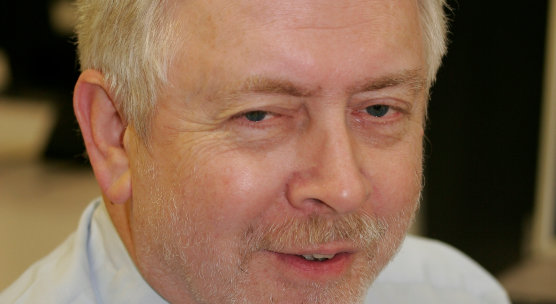Multilateral action required to prevent economic and ecological damage of invasive species
Published On Thu 13 Aug 2015 by Grant Hill

Invasive alien species (IAS) cost the UK and Irish economies almost £7 billion each year, according to new research from the University of Dundee.
Tony Jackson, an Honorary Research Fellow in the University’s School of Social Sciences, calculated the damages to the use and non-use values of ecosystem services caused by alien species using evidence from a recent study undertaken for the Republic of Ireland and the Northern Ireland.
His paper, published in the International Journal of Sustainable Society, shows the figure for economic damage dwarfs the sum spent by the British and Irish governments to deal with IAS, amounting to less than £10 million each year, but also highlights that there are understandable reasons why most high-income economies under-invest in biosecurity.
IAS refers to introductions of animals, plants or micro-organisms which pose such threats to their new environments. The spread of Ebola, ash dieback and the threat of extinction posed to native species such as red squirrels and are among the highest profile recent cases highlighting the deleterious effect of alien species.
Previously, most attempts to calculate the cost of IAS have focused on its effect on production but the new study uses modern instruments and economic methodologies to consider wider costs and implications.
It looks at the ecosystem’s productive services supporting activities such as farming, forestry, fisheries and minerals extraction, together with its cultural services, which require the maintenance of infrastructure to support recreation, tourism and other aesthetic pursuits, and its non-use values which reflect the utility people get simply from the presence of beautiful landscapes, biodiversity and natural heritage.
“Invasive alien species are much more expensive and damaging than people realise,” said Tony. “The amount governments spend on this is far too small, but there are plausible reasons why this is the case as countries are limited in what they can do unilaterally because of the public good nature of biosecurity. The optimal solution is for binding and robust international agreements which bring about collective action to overcome perfectly rational individual reluctance.
“IAS create significant external costs on world trade, transport and tourism at a time when living in an increasingly globalised world means national economies are increasingly exposed to this threat. Applying an ecosystem services approach to the calculation of IAS damages reveals that most current estimates focus on the loss of use values and overlook the impact on non-use values.
“Although the latter remains hard to evaluate, recent attempts to estimate the opportunity costs of safeguarding biodiversity suggest that the damage to non-use values caused by IAS is likely to outweigh the damage to use values by a considerable margin.”
Tony draws parallels between biosecurity and the challenges of combating climate change in that both must be able to cope with the characteristics of public goods, which present far more difficult problems than normal private ones. As such, a combination of environmental and economic factors related to the public good characteristics of biosecurity is shown to frustrate efforts to address this major global threat to biodiversity and well-being.
In a highly globalised world, a country’s biosecurity cannot be set by national governments alone. Even if one country passed stringent laws designed to bolster biosecurity, invasive alien species do not respect national borders and unless neighbouring states adopt similar policies then the effort and expense poured into prevention and eradication will have been in vain.
As such, the overall level of biosecurity is determined by the ‘weakest link’ country. It then follows that multinational environmental agreements offer the best prospects of combating IAS and Tony shows how the success enjoyed by Australia and New Zealand in fighting IAS offers hope for the rest of the world.
A recent report estimates that existing spending on biosecurity by EU Member States overall is currently running at some 40 million Euros per year, and recommends that it should be raised to around 190 million Euros annually. This amounts to 0.38 Euros per head of EU population, far below the 17 Euros per head that New Zealand currently spends.
Tony continued, “Everyone accepts that preventing the damage caused by IAS is a public good but governments know that investment will only be effective if it is matched by the weakest link. They are, therefore, reluctant to spend the money necessary to combat the risks and take the required action unless neighbouring countries and legally bound to do the same.
“Biosecurity is much tighter in New Zealand and Australia than in the EU or North America and their spending per head is much, much higher. Their isolation from weakest link problems has allowed them to put their own unilateral measures in place but these would not be nearly so effective elsewhere. Improving the current framework of multilateral environmental agreements that address biosecurity is the best shot of internalising some of the external benefits otherwise ignored by nationally determined funding.”
For media enquiries contact:
Grant Hill
Press Officer
University of Dundee
Nethergate, Dundee, DD1 4HN
TEL: 01382 384768
E-MAIL: g.hill@dundee.ac.uk
MOBILE: 07854 953277